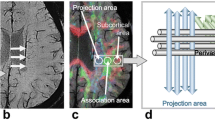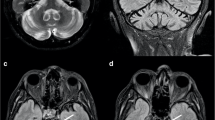Summary.
Proton magnetic resonance spectroscopy (1H-MRS) is a non-invasive method to investigate changes in brain metabolite composition in different cerebral diseases.
We performed proton spectroscopy in patients with dementia of the Alzheimer's type (AD) and in patients with motor neuron disease (MND) with the aim to detect the specific metabolic pattern for these neurodegenerative disorders.
In the MND group we found a significant reduction of NAA/tCr metabolite ratios in the motor cortex, which correlates with the disease severity and the clinical lateralization of neurological symptoms and further decreases in the time course of the disease. In AD patients a reduction of NAA/tCr was observed in the medial temporal lobe.
Since NAA is exclusively expressed in neurons as shown by immunohistochemical studies, reduced NAA levels suggest neuronal loss or dysfunction in the observed regions.
The observed regional metabolic alterations reflect the neuronal basis of the characteristic neurological symptoms in AD (dementia) and MND (muscular palsy) and mirrors the disease progress over time.
Similar content being viewed by others
Author information
Authors and Affiliations
Additional information
Received June 29, 2001 Accepted August 6, 2001 Published online August 9, 2002
Rights and permissions
About this article
Cite this article
Block, W., Träber, F., Flacke, S. et al. In-vivo proton MR-spectroscopy of the human brain: Assessment of N-acetylaspartate (NAA) reduction as a marker for neurodegeneration. Amino Acids 23, 317–323 (2002). https://doi.org/10.1007/s00726-001-0144-0
Issue Date:
DOI: https://doi.org/10.1007/s00726-001-0144-0




